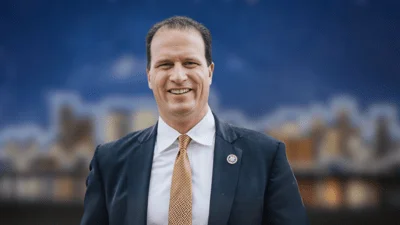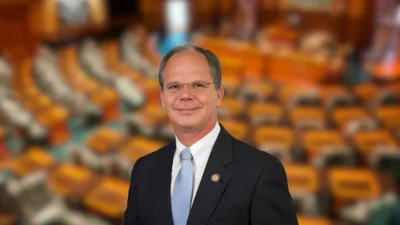The Congressional Record is a unique source of public documentation. It started in 1873, documenting nearly all the major and minor policies being discussed and debated.
“INFRASTRUCTURE” mentioning the U.S. Dept. of Transportation was published in the Extensions of Remarks section on pages E999 on June 5, 1996.
The publication is reproduced in full below:
INFRASTRUCTURE
______
HON. LEE H. HAMILTON
of indiana
in the house of representatives
Wednesday, June 5, 1996
Mr. HAMILTON. Mr. Speaker, I would like to insert my Washington Report for Wednesday, May 29, 1996, into the Congressional Record.
Infrastructure and Economic Development
Renewed attention needs to be given to the state of our country's infrastructure. Infrastructure is what physically holds this country together. It is our roads, bridges, airports, waterways, and water and sewer systems. The quality of life of Hoosiers is affected by these things every day.
Yet many of us take infrastructure for granted and need to be reminded how important it is. It's not until something goes wrong--such as hitting a pothole or having to boil drinking water because of high bacteria levels--that we realize how dependent we are on a high-quality infrastructure. Communities and businesses depend on infrastructure for basic services and for quick and easy movement of goods and people. Sound infrastructure helps get children to school and people to hospitals, allows us to maintain personal contacts, and ensures more productive, healthier lives.
Across the country we can see a lot of problems with the condition of our infrastructure. Many roads and bridges are in poor repair. The quality of the drinking water in certain parts of the country is deteriorating. Air traffic control towers at some airports use computers so old that they still have vacuum tubes. Clearly, something has to be done. We need to make investment in our infrastructure a priority. Without a sound infrastructure, the U.S. will find it increasingly difficult to maintain our high standard of living and competitive edge internationally.
importance to economic growth
Economic development is not possible without a good infrastructure. It helps businesses grow and expand and means more jobs for Americans. I often hear from Hoosier business leaders about how the widening of a local road or how increased water capacity has helped their business.
Studies have shown that failure to keep up our investment in infrastructure has contributed to a slowing of U.S. productivity increases since the early 1980s. Our global competitiveness depends on the efficiency of our infrastructure, especially transportation. In a country as vast as ours, our ability to move goods and services to market must be second to none.
infrastructure investment
Currently 70% of the funds for infrastructure investment come from local and state governments, with the federal government responsible for 30%. The federal government contributes to infrastructure repair and construction largely through spending from aviation, highway, transit, and waterway trust funds financed by user fees.
Yet while everyone acknowledges the critical need for good infrastructure, and while our needs continue to expand, public investment in recent decades has fallen short. A recent Department of Transportation report on the state of America's infrastructure concluded that we currently have a
$17 billion annual shortfall in what we should be investing just to keep our transportation system in good working order. Total U.S. public spending on infrastructure has fallen from 3.1% of gross domestic product in 1960 to 2.1% in 1994. Of the seven major industrialized nations, the U.S. ranks at the bottom in the ratio of public investment to gross domestic product.
congressional action
Congress has recently considered several measures relating to infrastructure policy and investment. Some of our actions are positive, but others are not.
Some of the highest profile infrastructure projects are highways and bridges. These are projects we can point to and see the direct impact on local economies. Congress approved a major overhaul of our transportation policy with the passage of the Intermodal Surface Transportation Efficiency Act
(ISTEA) in 1991. ISTEA is a six-year plan to reorient and modernize our transportation systems. ISTEA marked the shift in our policy focus from increasing transportation capacity to improving efficiency through better planning, management, and maintenance. Indiana and several others states are now doing better in their share of highway trust funds, but they still do not get back as much as they contribute. ISTEA is due to be reauthorized next year and I am hopeful that funding inequities will be addressed at that time.
Congress is working on an important measure to free up the
$30 billion surplus in the transportation trust funds. Funds available from the trust funds are capped each year because of arcane federal budget rules. I supported the House bill to take the transportation trust funds out of the federal budget, thus freeing this money from federal budgetary constraints.
While not as glamorous as the larger infrastructure projects, wastewater treatment plans and public water systems are an important part of our infrastructure. The cost of upgrading and constructing wastewater plants and drinking systems is overwhelming for many rural communities. Congress is taking steps to address this through changes in the Safe Drinking Water Act and the Clean Water Act. One measure would create a new fund (known as a state revolving fund) to help local communities finance drinking water treatment improvements. Another would reauthorize federal contributions for wastewater treatment construction.
Congress unwisely cut overall infrastructure funding for 1996, and is currently considering 1997 levels. Funding for safe drinking water and wastewater treatment would be maintained at current levels, but I am dismayed to see other drastic cuts being proposed. The bill which funds transportation programs would cut funding $2 billion below the current level. The bill to fund waterway improvements was also cut deeply. That may put in jeopardy the much-needed improvements at McAlpine Locks and Dam on the Ohio River. Without these improvements, barge traffic will continue to be impeded, slowing the flow of goods into Indiana and the Ohio Valley. Funding for local flood control projects also may be threatened.
These cuts are short-sighted and will serve to stunt the economic growth in many areas of our country. While I am well aware that Congress must rein in spending and reduce the deficit, infrastructure funding is an investment--an investment in our country's future. We should not waver in our commitment to helping people live better, more productive lives.
conclusion
Investment in our infrastructure is vital to maintaining the high quality of life Americans have come to expect. We want good drinking water, sound roads and bridges, and safe, efficient air travel, and we also want a growing economy and more jobs. An excellent infrastructure, second to none, will make our economy more competitive and our lives more pleasant.
____________________








